Naming a Giant Stable Aluminium Molecule Created in MolView
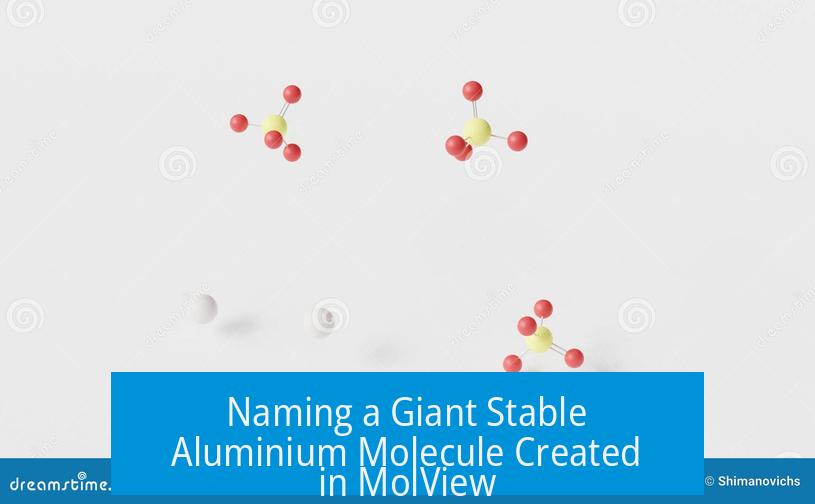
Assigning a name to a custom-designed giant aluminium molecule on MolView involves both scientific and creative considerations. The molecule’s stability and structure heavily influence this, as does the chemistry community’s conventions and humor around such novel molecules.
Assessing Stability of the Aluminium Molecule
Understanding whether the molecule is stable shapes how seriously to treat its name. Stability in molecules refers to resistance to decomposition, rearrangement, or reaction under normal conditions.
- Many commentaries on the molecule’s stability express skepticism, noting unusual charge states such as a −33 anion, which is chemically improbable due to immense electrostatic repulsion.
- Presence of adjacent double and triple bonds introduces tension. Those bonding arrangements rarely yield long-term stability.
- Metallic bonding typical of aluminium clusters is also not properly represented in simple molecular diagrams, so the model may miss real-world bonding features.
- Several voices caution that true stability might only exist near absolute zero temperature (~1K), which is not practical for naming a molecule as stable in everyday contexts.
Even though the molecule might not be experimentally feasible, a designed structure can represent an interesting theoretical or educational model.
Common Themes in Naming Such Molecules
When naming novel, especially hypothetical molecules, chemists use a mix of systematic and creative approaches.
- Systematic, based on Composition: Names reference the elemental composition and bonding pattern, such as “aluminium duodeconoxide” suggesting an oxide form.
- Descriptive of Structure or Charge: Terms like “unstablide” or “disintigranium” hint at a molecule’s questionable stability or radical nature.
- Playful and Humorous Names: Popular in online communities, names like “Biblic(Al)lly Accurate Angel,” “Transparent Aluminum,” or “Breakapartinananosecondium” reflect humor and community engagement.
- Pop Culture References: Names such as “Danny DeVito” or “Steve” serve to personify the molecule, easing conversational appeal.
Examples of Suggested Names from the Community
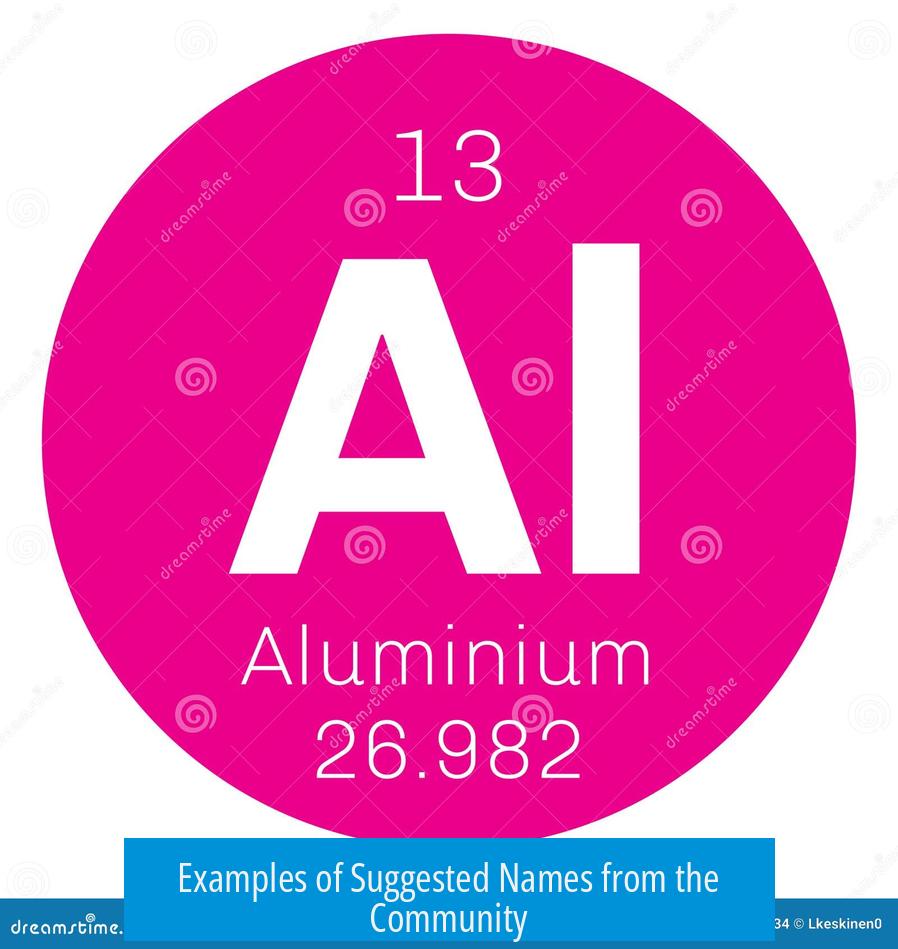
| Name | Basis or Style |
|---|---|
| Biblic(Al)lly Accurate Angel | Wordplay combining aluminium (‘Al’) with angelic imagery. |
| Impossiblium | Highlighting the molecule’s unlikely or impossible stability. |
| Unstablide | Denoting instability explicitly by suffix “-ide”. |
| Transparent Aluminum | Invoking pop culture (Star Trek) but also referencing aluminium’s common uses. |
| Breakapartinananosecondium | Joking about rapid decomposition due to unstable bonding. |
| Big Al | Simple nickname emphasizing large size. |
| McMoleculeAlumFace | Comic name from internet meme culture. |
| Danny DeVito | Personifying the molecule humorously. |
Scientific Naming Recommendations
For educational or theoretical molecules, a semi-systematic name works best. Incorporate:
- Number of aluminium atoms or formula unit—for example, “Aln cluster” where n is size.
- Charge state if notable, as in “Aln−x” where x is charge magnitude.
- Descriptors of bonding motifs if known: “Aluminylene” for aluminium analogues of carbenes, or “aluminide” for compounds with aluminium in specific environments.
Since your molecule is unusually large and charged, “Giant Aluminium Cluster Anion [Aln]−x” serves as a neutral, descriptive name.
Contextualizing the MolView Model
MolView allows the creation of molecular geometries but does not simulate real-time bonding dynamics or electronic stabilities. Thus, structures designed in MolView may be unrealistic chemically.
Models like yours serve as educational tools and imagination exercises—exploring hypothetical molecules expands conceptual knowledge.
Key Takeaways
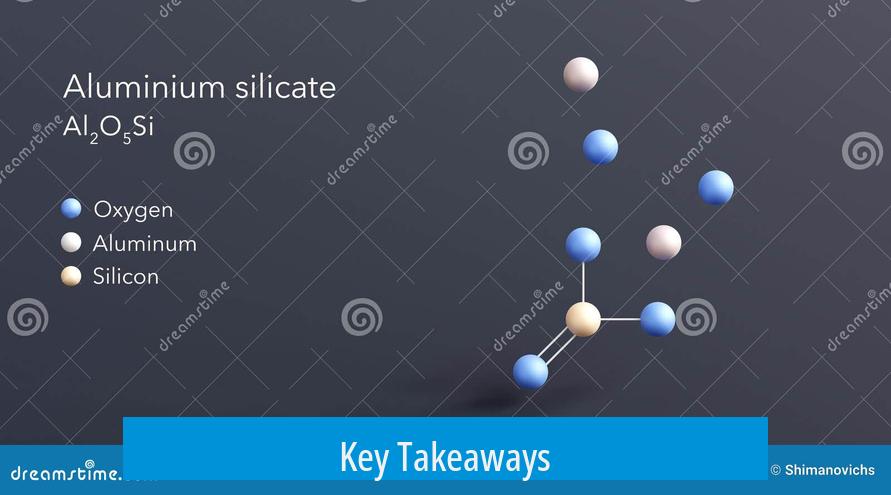
- Stability concerns make a chemical name based on actual existence difficult.
- Humorous and pop-cultural names are common for unusual, hypothetical molecules.
- Systematic names draw on molecular size, charge, and elemental makeup.
- MolView models can inspire creativity but may not reflect real chemical feasibility.
- A practical name could be “Giant Aluminium Cluster Anion [Aln]−x” pending more detail.
Made a Giant Stable Molecule Structure out of Aluminium on MolView! Can You Give It a Name?
So, you’ve crafted a massive aluminium molecule on MolView and proudly claim it’s stable. Can we call it truly stable? And what on earth should we name this metallic monstrosity? Let’s dive in.
First, claiming that enormous molecule of aluminium, teetering on the digital canvas with an astounding -33 charge, is stable? That’s a bold move. And science buffs on forums like r/cursed_chemistry spin their heads over it.
Stability in chemistry is a particular dance. It doesn’t just mean “holding together” like a stubborn sibling clinging to a beach towel during a windy day. It involves electronic balance, resonance, energy minimization, and bond arrangements that actually can exist in the real world without immediately dissolving or exploding.
Is Your Aluminium Compound Really Stable?
Community veterans aren’t buying the “stable” label. Doubts revolve around the bizarre double bonds right next to triple bonds causing massive tension, much like wearing tight shoes to a marathon. “Double bonds adjacent to triple bonds? That’s like a recipe for explosive instability!” one expert quips.
Add to that the strange, unnatural negative charges — a staggering minus 33 — and suddenly your molecule looks more turbocharged than a stable resting beast. Someone even joked, “Calling this stable is like calling me hot.” Oof.
Metallic bonds, where aluminium usually loves to reside, usually behave quite differently from the arrangement your MolView creation has. The digital model likely doesn’t reflect physical reality. It might hold together digitally at absolute zero on a simulated screen, but in the fiery world of actual chemistry, it would tear apart in a blink.
The sarcastic crowd cheers with phrases like “Totally stablilium” or “Stable for a shake at absolute zero.” Imagine your molecule surviving only in science fiction’s deepest freezer. That’s about as stable as a snowflake in a sauna.
Why Keep Building “Impossible” Molecules?
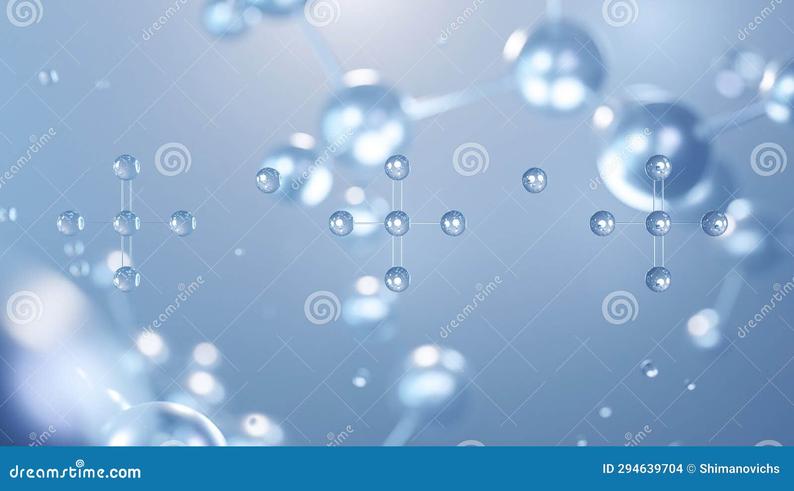
Despite the skepticism, the original poster’s enthusiasm shines through. The journey isn’t just about creating legitimate molecules but learning chemistry’s subtle rules and how electrons really dance. Every misstep teaches a profound lesson on molecule behavior.
One user encourages, “OP, why do you think it’s stable?” turning skepticism into a learning dialogue rather than shutting down curiosity. In chemistry, questioning and trial are key. After all, discovery happens when you push boundaries.
This coil of aluminium bonds, even if impossible, inspires creativity and humor — essential components in science education.
What To Name This Aluminium Giant?
Now, the fun part. What do we officially call your big, “stable” aluminium molecule? The community unleashed an absurdly entertaining list:
- “Impossiblium”: Perfect for a molecule defying chemical rules.
- “Biblic(Al)lly Accurate Angel” — because it’s truly a miraculous construct.
- “Al Bondy” — a play on James Bond but with aluminium flair.
- “Breakapartinananosecondium?” — because we all suspect it might literally fall apart that fast.
- “Danny DeVito” or simply “Steve” — personal, warm, oddly charming names to humanize the molecule.
- “Transparent Aluminum” — a wink to pop culture, inspired from Star Trek’s mythical material.
- “Unobtanium” — nodding to the impossible element in sci-fi lore.
- “McMoleculeAlumFace” — because why not?
There’s no shortage of humorous nods or charmingly ridiculous choices. Naming a molecule like this becomes a storytelling exercise blending chemistry wit and meme culture.
What We Can Learn From This Aluminium Adventure
From the heated debates and laughter, some lessons stand out:
- True Stability Requires Sound Chemistry: Simply stacking bonds—with dubious charges—won’t cut it. Real molecules obey quantum mechanics and energy laws.
- Community Feedback Helps Learning: Instead of scolding, constructive questions spark curiosity. This molecule’s story is a perfect example of science discussion’s social side.
- Humor Motivates Exploration: Giving your molecule playful names softens critique and makes science fun, encouraging newcomers.
- Try, Fail, Repeat: Every imaginary molecule built on MolView improves understanding even if it can’t exist.
- Share With Related Communities: The OP was advised to post on r/ImmaterialScience, where aficionados appreciate such geeky experiments.
So, Should You Call It “Big Al” or “Notpossiblium”?

Why not both? Naming your molecule allows the celebration of creativity while accepting scientific reality. “Big Al” gives it endearing character, “Impossiblium” highlights its fictional nature, and “Breakapartinananosecondium” keeps it honest.
Your aluminium giant teaches that enthusiasm paired with open-minded learning beats perfection. Whether it’s truly stable or a digital illusion, it’s an achievement in imagination and chemistry curiosity.
Final Thoughts and Practical Advice
If you are experimenting with MolView or other molecular modeling tools, here’s some tips:
- Check chemical rules like valency, bond orders, and charge neutrality to improve stability.
- Use smaller, simpler units before scaling up to giant molecules.
- Seek feedback from chemistry forums; their blend of critique and humor sharpens understanding.
- Enjoy the creative process more than the result; molecules don’t have to exist to teach you.
- Reference known aluminium compounds as guides — aluminium usually prefers metallic bonding and forms oxides rather than weird anions.
Have you ever built a molecule on MolView or similar software? Did it withstand the reality check, or did it become a “Danny DeVito” of chemistry? Share your stories!
“Science is built on curiosity and play – your aluminium giant proves that spectacularly.”
So next time you model a molecule, ask yourself: Is this a genuine stable structure—or simply a delightful lab of imagination? The best molecules are both educational and entertaining. Cheers to your aluminium adventure!
What does “stable” really mean for this aluminium molecule?
Stable in chemistry means the molecule can exist under normal conditions without breaking apart. Your aluminium structure has unusual charges and bonds that suggest it wouldn’t last long outside extreme conditions like near absolute zero.
Can this giant aluminium molecule truly exist in real life?
Most comments suggest it likely cannot. The strange charge distribution and bond types used do not reflect known aluminium chemistry or metallic bonding. It’s more a creative model than a real compound.
How should I name my giant aluminium molecule?
Community suggestions range from serious to funny. Names like “Impossiblium,” “Breakapartinananosecondium,” or “Danny DeVito” show creative freedom. Pick whatever fits your model’s character.
Why do some people joke about the molecule’s stability?
Because the structure defies conventional rules, some comments sarcastically call it “very stable” or “totally stablilium.” These jokes highlight the scientific inconsistencies humorously.
Where can I share my aluminium molecule for feedback?
Platforms like r/cursed_chemistry or r/ImmaterialScience welcome such experimental or humorous molecular models. They’re good places to get both serious and lighthearted input.


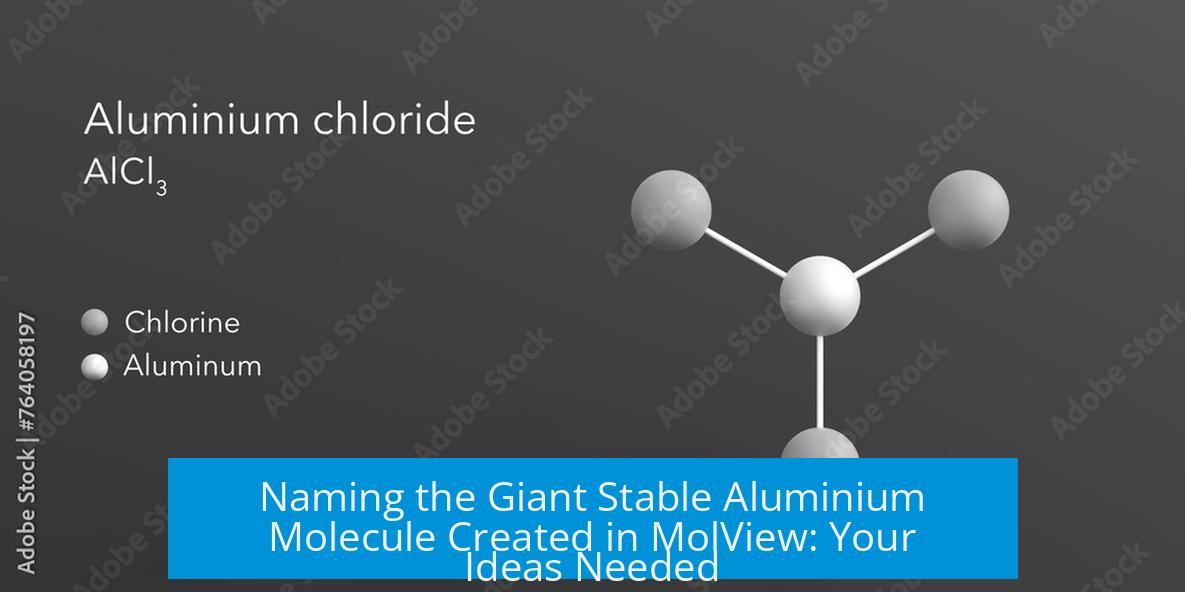


Leave a Comment